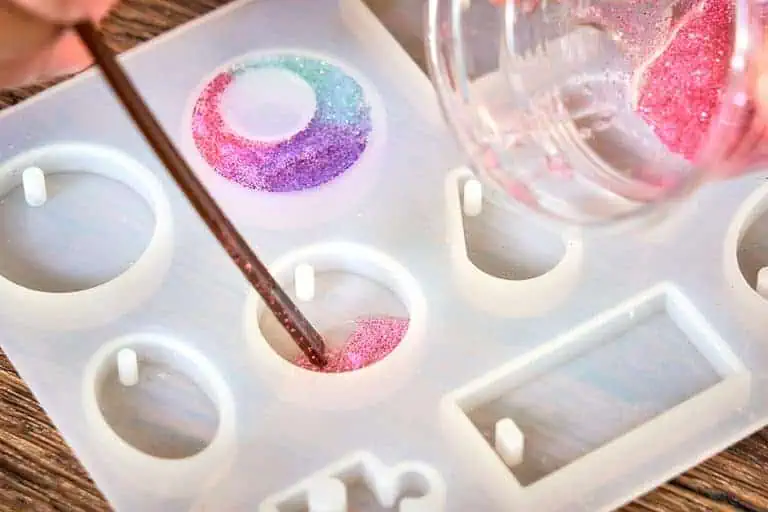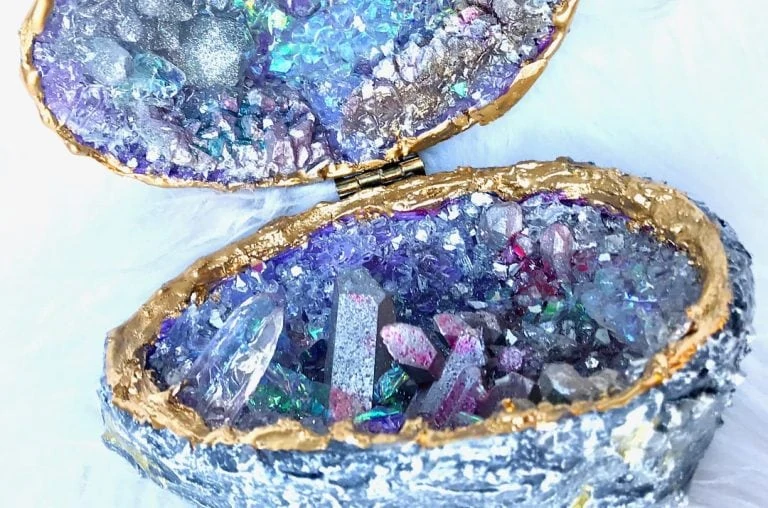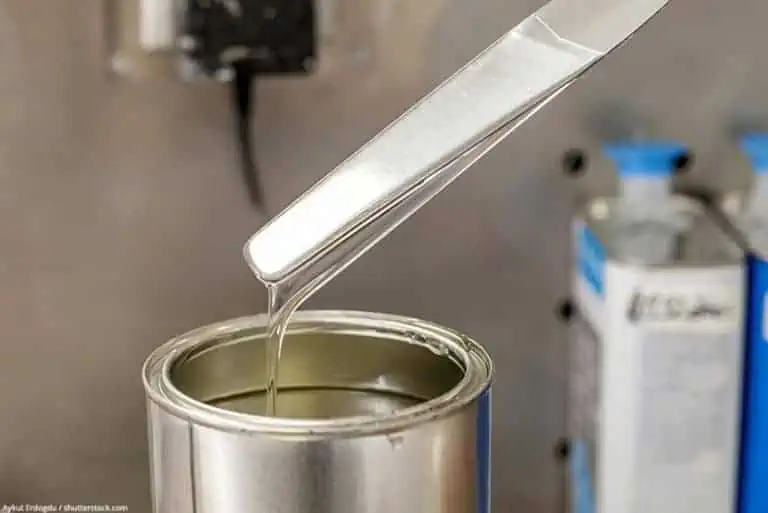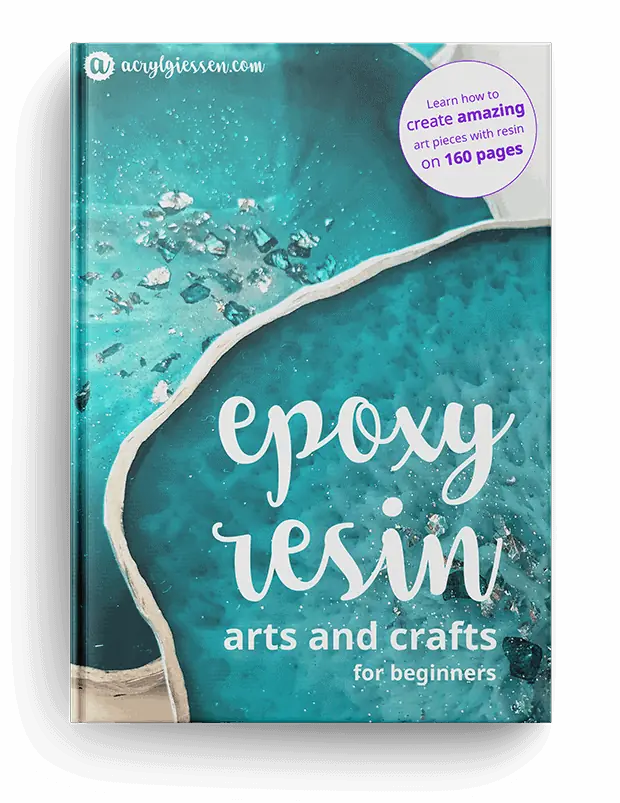Best Silicone Molds for Resin – Resin Art Molds Overview
This post may contain affiliate links. We may earn a small commission from purchases made through them, at no additional cost to you.
These days, there is virtually nothing you can’t make out of plastic, from toys to tools, to functioning handguns. Plastic, and by extension, plastic resins, have revolutionized the way we live our lives by offering an unparalleled increase in our quality of life. What exactly is resin and how do so many crafters use it to create intricate and stunning workpieces? Let’s have a look at resin castings, silicone molds, and how they’re used.
Table of Contents
What Are Resin Molds?
What is the reason for molds? Have you ever seen an action figure or an ornate Christmas decoration that hangs from trees during cold December months? Well, many of these little trinkets are made out of resin. Resin is a two-part liquid polymer that can be poured into a mold to create the desired form; these molds can vary in size, shape, composition, material, color, and application.
The nice part about resin casting as a crafting practice is that you don’t need a whole lot to get started, and when it comes to molds specifically, you have the option of making your own or going with the store-bought variety. If you are interested in making your own, you will have a choice between various mold putty which can be used to create your mold, these putties are often made of silicone rubber or latex rubber which can be wrapped around an existing object to capture its form. Once the object’s form has been captured by the putty, it can be removed and filled with the two-part epoxy resin mixture which then replicates the object you wish to replicate. Resin castings created through this process can then be painted, sanded, reduced, hung, pasted, and generally modified in various ways for artistic expression.
Common creations using resin and the aforementioned molds range from figurines to toys, decorations, key chains, item holders, smartphone covers, placemats, and even functional objects such as tools and impact-resistant coverings.
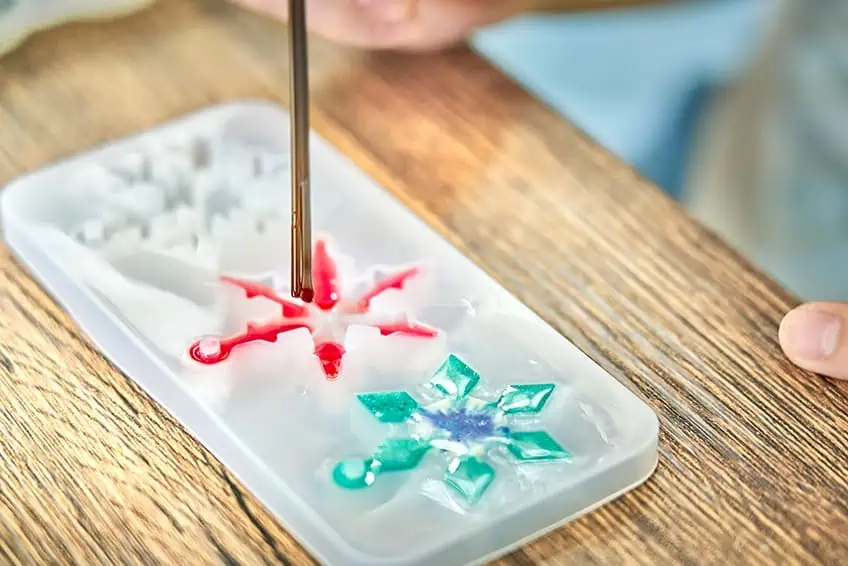
What to Look for In A Resin Mold?
What should you look for in a resin mold? Well, considering that molds are often made of different materials for different forms and their subsequent applications, there’s very little to be said about what the best resin mold is. However, there are three types of resin molds you have to choose from, these are pre-made plastic molds, silicone rubber DIY resin molds, and latex rubber DIY resin molds. All of these molds have their respective advantages and disadvantages, so let’s have a look at each of them so you can decide which fits your application best.
Store-Bought Plastic Molds
Store-bought molds are not all necessarily made of plastic, however, the most commonly sold entry-level items typically are. These molds are great fun and come in such a wide variety of shapes that it would take quite some time to cover all of them, so if you are interested in creating some fun decorative pieces or even a nice holder for your phone you should check out your local craft supply store. These molds are typically mass-produced in plastic and are sold in value packs, this means that for a purchase of $10.00 you can end up with 20 or more castings over the course of a weekend.
These molds are sturdy, smooth, rigid, and rarely need an anti-adhesive coating to be applied to them before casting resin is poured in. The only disadvantage these molds present is that you are limited to the forms made by the manufacturer which can be frustrating after the novelty of the experience wears off. Another thing to consider if you are environmentally conscious is that some molds are made from plastics that aren’t reusable or biodegradable, and since they are mass-produced, they do have a noticeable impact on carbon emissions. Most large resin molds are plastic to increase rigidity.
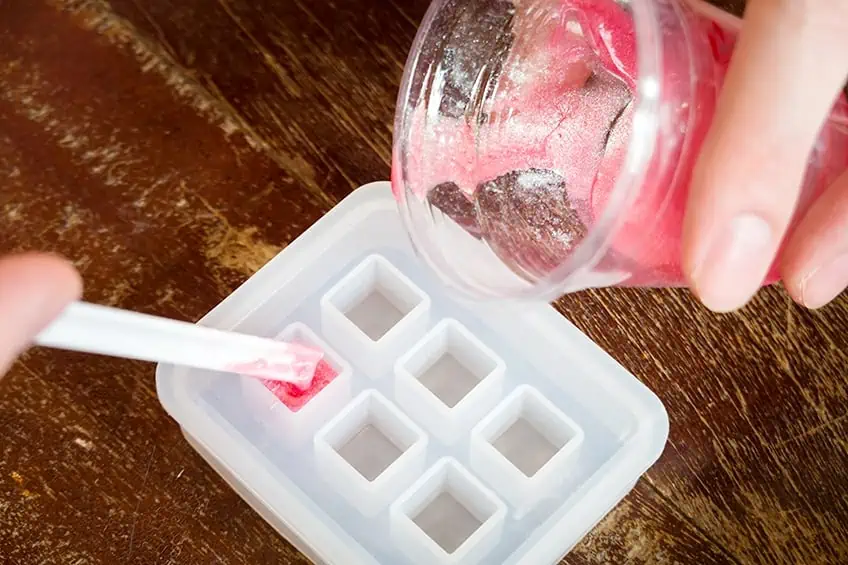
Silicone Rubber DIY Molds
Now for our DIY molds. A silicone rubber kit can be used to create your resin molds if you ever grow tired with the precast molds sold in store. This is pretty neat; it allows you to create a negative form of any object simply by coating the object in silicone resin and allowing the silicone to harden.
Once hardened, the silicone coating can be removed and you can then fill this negative form with casting resin and re-create the object you have selected. This re-creation should be highly malleable due to the natural consistency of most casting resins meaning it can be modified to your personal preference with little effort, and the limits of said modifications are only limited by your imagination.
Silicone rubber mold resin is easy to use too, simply empty the solution into a container filled with soapy water and pop on some gloves. Once in the water, put on a pair of gloves and knead the resin until it starts to harden. When you feel the consistency is adequate (or when the manufacturer instructs you to) take the blob of resin out of the water and use it to coat the object you wish to replicate.
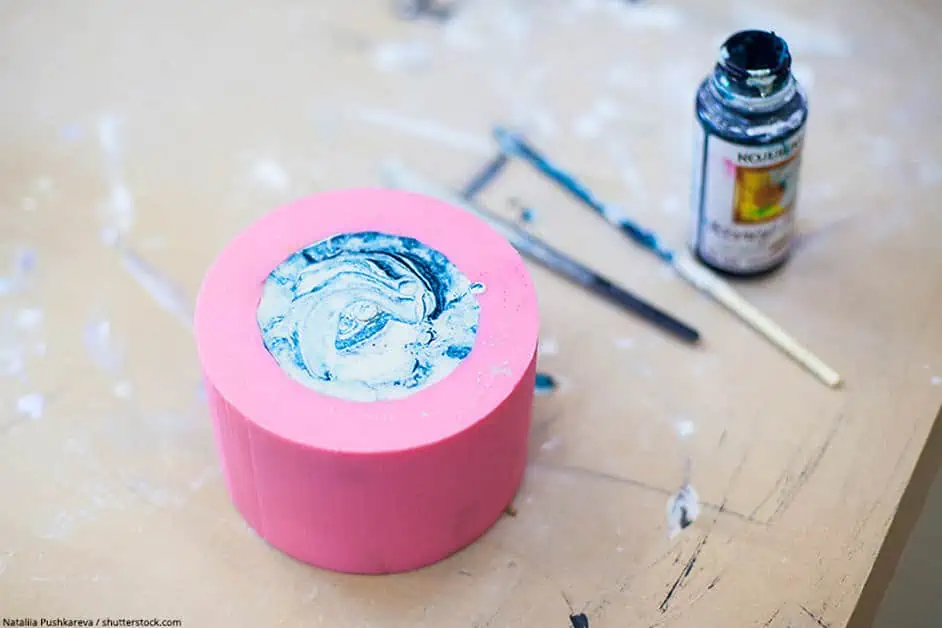
Allow the mold to set to the manufacturer’s recommended time and remove it from the object to claim your mold! Pre-made silicone rubber molds can also be purchased in stores for various niche designs, stores will also allow you to commission a design from them for custom creation. Note that silicone putty molds are safe for use with foodstuffs however, liquid epoxy resin is not food safe. We have a separate tutorial on how to make silicone molds.
Latex Rubber DIY Putty Molds
Latex molds are less common and were around a bit before silicone resin molds were initially introduced. You can find latex rubber mold resin at most home improvement stores and craft stores.
This mold creation medium does require a bit more effort and technique compared to the silicone rubber mold we mentioned previously, but they are arguably a bit longer-lasting. To create your Latex mold simply take the object or “master” that you wish to replicate and coat it in the liquid latex with a paintbrush. When using latex to create a mold you will need to apply multiple coats and allow each coat to dry sufficiently between coatings.
This can take a few hours, which is significantly longer than silicone rubber mold material, so we would not recommend this method if your project is time-sensitive. Once sufficient coats have been applied and all have dried adequately, apply a non-stick coating like cooking spray to the surface of the latex mold material. Once covered, apply plaster of Paris to the mold material and allow the coating to dry for the manufacturer’s recommended time period.
Once the plaster has dried, remove it without removing the mold itself from the object you are trying to replicate. Once the plaster has been removed, remove the latex mold from the object and lay it inside the negative made by the paste. You should now be able to pour in your casting resin and begin replicating the object you have chosen.
What Are the Best Selling Pre-Made Resin Molds?
As we mentioned previously there are tons of mold forms out there that allow you to make a variety of fun resin castings. Not all products are created equal though (in both the practicality and the fun departments) so what are the best silicone molds for resin? Let’s have a look at some of the best silicone molds for resin and see how they stack up against one another.
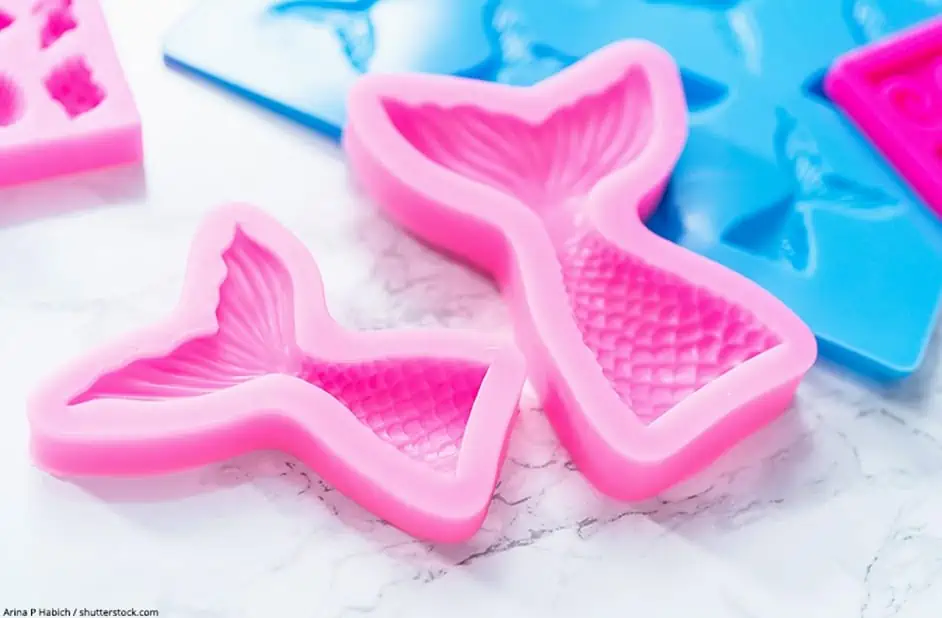
Best Variety Molds: CROWNMADE Mini Geode Resin Molds
LET’S RESIN Geode Resin Coaster Molds set includes 4 high-quality silicone molds designed to create stunning druzy and agate-style coasters. Perfect for resin crafting enthusiasts, these molds allow you to craft unique and beautiful coasters with intricate geode patterns. The flexible and durable silicone ensures easy demolding and long-lasting use, making it simple to achieve professional-looking results. Ideal for DIY home decor, gifts, or even as a creative hobby, these molds provide endless possibilities for artistic expression.
- Keeps its shape for casting with flexibility to ensure easy to release
- Finished products are glossy and shiny, no polishing required
- Mold can produce coasters, jewelry holders, dishes, or candle holders
Best Molds for Keychains: LET’S Resin Alphabet Mold
Our next pick for one of the best silicone molds for resin has to be the alphabetical mold for resin from Let’s Resin. This product is not only reusable, but it allows you to create virtually infinite stylized variations of the alphabet which can be used for essentially anything that comes to mind at the time. What comes on the box upon purchase is the mold (obviously), 50 O-rings. There is no need to drill the holes, as they are integrated in the mold. This is perfect for creating mobiles for little ones, a fun art project for the kids during the school holidays or simply creating a unique and personalized gift for your friends and family.
- Flexible, resistant to tearing, durable and easy to move out letters from mold
- No Need To Drilling
- Come with 1x alphabet silicone mold and 50 O rings
These molds are easy to use, and if you are new to resin casting, we recommend this as a great starting point. Why? The molds require no preparation, and the letters are easy to pop out once cured!
Best Ornate Figurine Molds: PATELAI Pendulum Resin Molds
It’s difficult to find something simple these days. With virtually everything being branded or trendy at the moment, it can be nice to have something decorative that is simple and effective, and this is what the Patelai team offers you with their range of pendulum resin molds. The pack offers you 10 variations of pendulums that can be suspended vertically (obviously) from virtually anywhere and considering the variation of colors and gradients of resin that can be used with these molds, the possibilities are endless.
- 10 different shapes and sizes crystal quartz resin pendant molds
- Made of durable silicone material, very flexible and easy to clean
- With nice elasticity, high tear strength, smooth and shiny interiors
These molds are easy to use and easy to clean, and what’s more, is that they are highly resistant to tearing and breaking due to the high quality of their design. One of the best parts about these molds is that you don’t just have to use them with resin, they can be used with a wide variety of other casting materials, just ensure that you check these materials are compatible with silicone molds.
These molds offer great value for money and will offer countless hours of fun while making great gifts for your friends and family whether it be during the holiday season or the odd personalized birthday gift!
Best Jewelry Mold: DHSHRUN Hair Pin Jewelry Resin Molds
Jewelry can brighten up just about anyone’s day, and with this resin mold kit, you’ll be able to make your own in the blink of an eye! Although this is a bit of a niche in the epoxy molds market, this product is specifically designed to create hair clips, which is fairly unique. It’s not often that you find a resin mold for such a unique accessory, so why not take advantage of it?
- 3pcs hair clips resin silicone molds + 27pcs hair clips.
- Made of durable silicone by advanced techniques, flexible and easy to use.
- The hair barrettes are made of high quality metal alloy.
These epoxy molds come in sets of three which allow you to create water drop, rectangular, and straight pin hair clips for essentially any occasion. These don’t just have to be for you either, these clips make wonderful additions to gifts and can be personalized through modification of your resin, this means that you can make them any color, add glitter, make them glossy, matte, striped, add a gradient, or simply pop something interesting into the mold!
Depending on your ambition, you could even sell your creations for a little extra money on the side, this is perfect for kids looking to raise funds for school functions or simply to have some fun with on weekends.
Best Shape Molds: LET’S RESIN Epoxy Resin Kit
Are you looking to create some great installation art? Do you need something to bring your living space together? Maybe you’re simply looking for something interesting for your desk at work. Regardless of your reason, LET’S RESIN Epoxy Resin Kit is an all-in-one solution for beginners venturing into resin casting. This comprehensive starter kit includes high-quality epoxy resin, a hardener, and a variety of silicone molds, such as spheres and pyramids, providing everything needed to start crafting immediately. The epoxy resin cures to a crystal-clear, durable finish, ensuring professional-looking results for various projects. With its user-friendly design and versatile mold options, this kit simplifies the resin casting process, making it accessible and enjoyable for newcomers to create stunning resin crafts.
- Includes everything needed for resin casting, making it ideal for beginners
- The kit provides high-quality epoxy resin that cures to a crystal clear ensuring professional-looking results
- This kit is designed to be user-friendly, enabling beginners to create a wide range of resin crafts with ease
How to Use Your Resin Mold?
If you are new to using silicone resin molds the task can seem daunting. Not to worry though, we have included a short tutorial to show the basics, simply follow these steps and you’ll have your latest resin creation in front of your eyes in no time at all. Let’s get started!
![]()
Prepare Your Mold
Before you get started ensure that you are wearing some tight gloves and that you are working in a well-ventilated area. The first step is to prepare your mold and your resin. Start by cleaning your mold out with some soapy water and washing it as thoroughly as possible. Large silicone molds tend to gather a lot of dust and this can affect the overall quality of your casting if you aren’t careful. Once you are sure that your mold is clean, prepare your workspace by placing down a tarp or newspaper on your workbench. Resin has a tendency to get around easily so it’s best to be prepared. If you feel like splurging on some anti-adhesive coating, we recommend giving into that feeling.
Prepare Your Resin
Once you have your mold prepared it’s time to get your resin ready. Most resin is sold in two parts, which are the resin and the hardener. Ensure that you mix these together exactly as instructed, even though the typical ratio is 1:1 we strongly recommend that you follow the manufacturer’s instructions in the process of mixing it together. For the next part, keep in mind that resin is a time-sensitive medium to work with, so if you have any dye, glitter, or other additives that you would like to add to the resin you should do it now. Once you have everything in the mixing container, stir thoroughly until you are happy with the consistency of the color/pattern you are going for before moving on to the next step in the process.
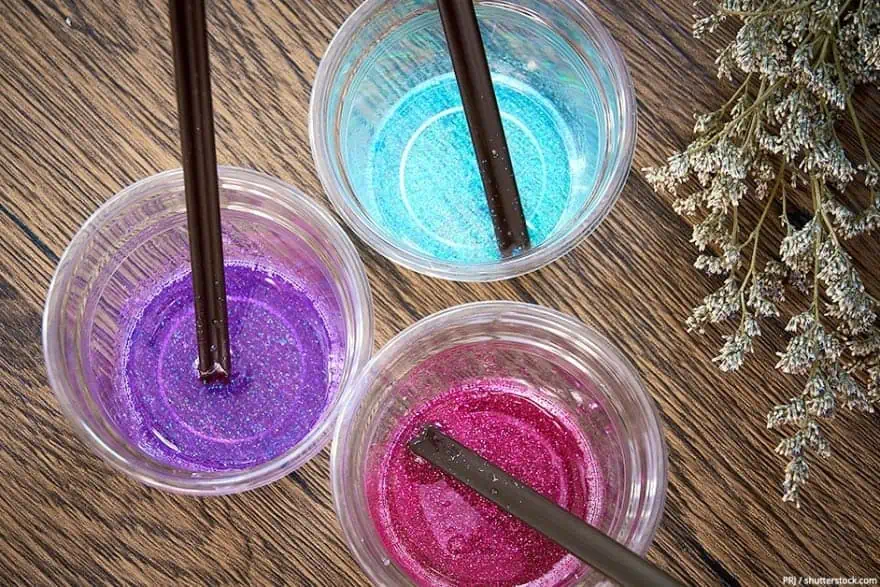
Pour the Resin Into Your Mold
Now for the easy part. Large silicone molds are easier to work with even though they require mixing on more resin since you just have to pour the resin straight in. Smaller molds might require you to use a small spoon or stick to get the rein into the mold which can be a bit frustrating as the resin has a bit of an odd consistency compared to most common liquids. Once you are sure that the mold has been filled up and has no air bubbles in it you can lock it up as recommended by the manufacturer. If you have any objects that you would like to add to the mold this is the time to do it but be sure to compensate for the displacement caused by the object if you do, the last thing you want is resin spilling out of your mold at this stage. Allow the resin to dry for the manufacturer’s recommended time period.

Remove Your Casting
This is arguably the most painstaking part of the process. Removing your resin casting correctly can mean the difference between a workpiece that looks the way it was intended to and one that you end up screaming at in frustration. Once you are absolutely sure that your resin has dried pop the casting out of the mold as slowly as possible while ensuring that you don’t accidentally puncture it with your fingers. Demolding larger molds are significantly easier, and smaller objects are easier to remove if the anti-adhesive spray is used on the mold beforehand, and if done correctly your casting should pop right out. Once you have your casting removed, ensure that you soak and clean both your mixing cup and mold thoroughly before packing them away.
Now that you know what a resin mold is, how to make your own resin mold, what kind of resin molds are out there (for all occasions) and how to successfully create your own resin castings using a silicone mold, it’s time for you to go out and put your new-found knowledge to the test. Remember, always wear the appropriate personal protective gear and work in a well-ventilated area!

Frequently Asked Questions
What Is the Best Mold for Epoxy Resin?
The best molds for epoxy resins are silicone molds. What are the best silicone molds for resin you might ask? While there are many brands out there the best molds will be smooth, flexible, easy to use, reusable, and resistant to wear and tear.
![]()
What Does Resin Not Stick To?
Epoxy resin can be found in almost every aspect of daily life, but it does not adhere well to shear surfaces. This means that surfaces like treated (or untreated) polyvinyl, Teflon, nylon, acrylic, and polycarbonate plastics. It will adhere to wood, metal, and even glass!
What Is a Safer Alternative to Resin?
While there is nothing inherently unsafe about resin, it can cause discomfort if ingested before it has set completely. If you are looking for a suitable alternative you should consider clay, concrete, plaster, glue resin, or acrylic resin for your next workpiece.
In 2005, Charlene completed her wellness degrees in therapeutic aromatherapy and reflexology at the International School of Reflexology and Meridian Therapy. She worked for a company offering corporate wellness programs for several years before opening her own therapy practice. In 2015, she was asked by a digital marketer friend to join her company as a content creator, and it was here that she discovered her enthusiasm for writing. Since entering the world of content creation, she has gained a lot of experience over the years writing about various topics such as beauty, health, wellness, travel, crafting, and much more. Due to various circumstances, she had to give up her therapy practice and now works as a freelance writer. Since she is a very creative person and as a balance to writing likes to be active in various areas of art and crafts, the activity at acrylgiessen.com is perfect for her to contribute their knowledge and experience in various creative topics.
Learn more about Charlene Lewis and about us.






